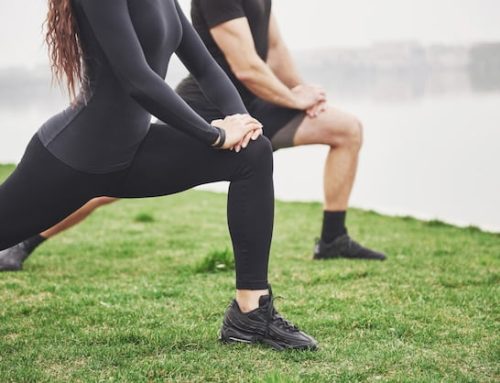The Importance of Stretching: Does Sore Muscles Mean It’s Working?
Having sore muscles after a workout is a common experience for many people, especially those who are new to exercising. This pain usually occurs due to tiny tears in the muscles that happen when you put them under physical stress. While soreness can be a sign of progress, it’s not always an indication that your workout was effective. In this article, we’ll explore the relationship between soreness and muscle growth, and the role that stretching plays in preventing injury and improving performance.
Understanding Muscle Soreness
Delayed onset muscle soreness, commonly known as DOMS, is the type of soreness that you feel in your muscles a day or two after working out. This is often caused by small micro-tears in the muscle fibers, which occur when the muscle is put under strain. DOMS can cause discomfort and stiffness, making it harder to move around, but it’s not necessarily a sign that your workout was effective.
The Myth of “No Pain, No Gain”
The phrase “no pain, no gain” suggests that unless you’re pushing yourself to the brink of exhaustion, you’re not working hard enough. However, this is a dangerous myth that can lead to serious injury. Pain is not always an indication that your workout was effective, and pushing yourself too hard can lead to overuse injuries, which can take weeks or even months to heal.
The Role of Stretching in Preventing Injury
Stretching is an essential component of any workout routine, as it helps to warm up the muscles and prepare them for physical activity. Stretching can also help prevent injury by improving flexibility and range of motion. When your muscles are more flexible, it’s less likely that you’ll strain or tear them during exercise.
The Importance of Proper Form
Another crucial element of injury prevention is using proper form during your workouts. Poor form can put unnecessary strain on your muscles and joints, increasing your risk of injury. If you’re not sure how to perform a particular exercise correctly, it’s best to seek the advice of a qualified fitness professional.
How to Prevent Muscle Soreness
While some degree of soreness is inevitable when you’re working out, there are steps you can take to minimize it. First and foremost, make sure that you’re properly hydrated before, during, and after your workout. Dehydration can exacerbate muscle soreness, so drinking plenty of water is essential.
In addition, be sure to stretch before and after your workout, focusing on the muscles that you’ll be using the most. Cooling down after your workout can also help reduce muscle soreness by allowing your body to gradually return to its resting state.
The Bottom Line
In conclusion, sore muscles are not always an indication that your workout was effective. While some degree of discomfort is normal, pushing yourself to the point of pain can lead to serious injury. Stretching and using proper form during your workouts are essential components of injury prevention, and can help minimize muscle soreness. Remember to listen to your body, and don’t be afraid to take a break if you need one. With these strategies in mind, you can safely and effectively achieve your fitness goals.






